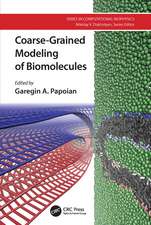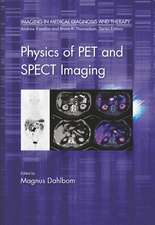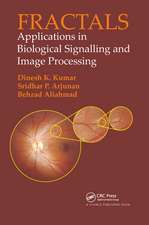Introduction to Genetic Analysis
Autor Anthony J. F. Griffiths, Susan R. Wessler, Richard C. Lewontin, Sean B. Carrollen Limba Engleză Hardback – 29 apr 2007
New edition of the introductory text, acclaimed for its well balanced coverage of classical and molecular genetics and its focus on genetic analysis and problem solving. The author team welcomes a new co-author, Sean B. Carroll, a recognized leader in the field of evolutionary development, to this new edition of Introduction to Genetic Analysis. The authors' ambitious new plans for this edition focus on showing how genetics is practised today. In particular, the new edition emphasizes how genetic analysis can be a powerful tool for answering biological questions of all types.
NEW TO THIS EDITION
* New organisation - the book has been strealined from 21 to 29 chapters to present a more modern organisation of topics
* New chapter: 'Evolutionary Development'
* New single column design and new colour palette
* Increased coverage of Genomics throughout
* Increased focus on modern research
* New end-of-chapter problems
STUDENT SUPPLEMENTS
* Companion Website at www.whfreeman.com/iga9e: Offers a range of study tools such as On-line Sample Tests, Step-Through and Continuous Play FLASH Animations, Interactive 'Unpacking the Problem', and Exploring Genomes: Web-Based Bioinformatics Tutorials.
* Solutions Mega Manual http://www.palgrave.com/products/title.aspx?PID=279805: Contains worked-out solutions to all the problems in the textbook.
LECTURER SUPPLEMENTS (Only available to confirmed adopters of the book - see below for details)
* Companion Website at www.whfreeman.com/iga9e: Includes all images from the text, 45 Step-through and Contimuous Play FLASH Animations, Solutions Manual, and Assessment Bank.
* Instructor's Resource CD-ROM (978-1-4292-0176-6): Contains all features available on the Companion Website.
* Overhead Transparancies (978-1-4292-0175-9).
Lecturers Supplements are available to confirmed adopters of the textbook. To request, please email lecturerservices@palgrave.com with the title and ISBN of the required supplement together with your academic details:
Supplement requested
ISBN
Your name
Your Job Title
Your academic address
Your academic email
Module name
Module start date
Module student numbers
Preț: 211.28 lei
Nou
Puncte Express: 317
Preț estimativ în valută:
40.44€ • 42.06$ • 33.89£
40.44€ • 42.06$ • 33.89£
Carte disponibilă
Livrare economică 20 februarie-06 martie
Preluare comenzi: 021 569.72.76
Specificații
ISBN-13: 9780716799023
ISBN-10: 0716799022
Pagini: 800
Ilustrații: 800 illustrations
Dimensiuni: 225 x 285 x 33 mm
Greutate: 1.94 kg
Ediția:Revizuită
Editura: W. H. Freeman
Colecția W. H. Freeman
Locul publicării:New York, United States
ISBN-10: 0716799022
Pagini: 800
Ilustrații: 800 illustrations
Dimensiuni: 225 x 285 x 33 mm
Greutate: 1.94 kg
Ediția:Revizuită
Editura: W. H. Freeman
Colecția W. H. Freeman
Locul publicării:New York, United States
Cuprins
The Genetic Approach to Biology
Single-Gene Inheritance
Independent Assortment of Genes
Mapping Eukaryote Chromosomes by Recombination
The Genetics of Bacteria and their Viruses
Gene Interaction
DNA: Structure and Replication
RNA: Transcription and Processing
Proteins and their Synthesis
Regulation of Gene Expression in Bacteria and Their Viruses
Regulation of Gene Expression in Eukaryotes
The Genetic Control of Development
Genomes and Genomics
The Dynamic Genome
Mutation, Repair, and Recombination
Large-Scale Chromosomal Changes
Population Genetics
Quantitative Genetics
Evolutionary Genetics
Gene Isolation and Manipulation
Notă biografică
ANTHONY J.F. GRIFFITHS is a Professor of Botany, Emeritus, at the University of British Columbia, Canada. Griffiths' research focuses on the developmental genetics of fungi, using the model fungus Neurospora crassa. He was President of the Genetics Society of Canada from 1987-1989.
SUSAN R. WESSLER is Distinguished Research Professor of Plant Biology and Genetics at the University of Georgia, USA. Wessler was elected to the National Academy of Sciences in 1998. Her research focuses on plant transposable elements and the structure and evolution of plant genomes; she has published over 100 research articles on this area of research.
RICHARD C. LEWONTIN is the Alexander Agassiz Research Professor at Harvard University, USA. His area of research is population and evolutionary genetics. Lewontin introduced molecular methods into population genetics in 1996.
SEAN B. CARROLL is an Investigator at the Howard Hughes Medical Institute and Professor of Molecular Biology and Genetics at the University of Wisconsin in Madison, USA, where he also teaches courses in genetics and evolutionary biology. Carroll is the acknowledged leader in the field of evolutionary developmental biology. He was nominated as a finalist in the LA Times Book Awards for his work Endless Forms Most Beautiful: The New Science of Evo Devo.
SUSAN R. WESSLER is Distinguished Research Professor of Plant Biology and Genetics at the University of Georgia, USA. Wessler was elected to the National Academy of Sciences in 1998. Her research focuses on plant transposable elements and the structure and evolution of plant genomes; she has published over 100 research articles on this area of research.
RICHARD C. LEWONTIN is the Alexander Agassiz Research Professor at Harvard University, USA. His area of research is population and evolutionary genetics. Lewontin introduced molecular methods into population genetics in 1996.
SEAN B. CARROLL is an Investigator at the Howard Hughes Medical Institute and Professor of Molecular Biology and Genetics at the University of Wisconsin in Madison, USA, where he also teaches courses in genetics and evolutionary biology. Carroll is the acknowledged leader in the field of evolutionary developmental biology. He was nominated as a finalist in the LA Times Book Awards for his work Endless Forms Most Beautiful: The New Science of Evo Devo.
Caracteristici
1 Increased coverage of Genomics throughout
2 New chapter on Development by Sean Carroll reflecting the exciting research in Evo Devo studies
3 New landmark experiments illustrating modern genetic approaches
2 New chapter on Development by Sean Carroll reflecting the exciting research in Evo Devo studies
3 New landmark experiments illustrating modern genetic approaches
Caracteristici noi
NEW ORGANISATION
* The book has been streamlined from 21 to 19 chapters to present a more modern organization of topics. For example, the authors have eliminated a number of classical experiments which are irrelevant to modern genetic analysis, to provide a book where the emphasis is on how genetics is practiced today.
NEW DEVELOPMENT CHAPTER
* Evolutionary development is an exciting field of research. 'Evo Devo' studies are at the forefront of science, raising new questions about the genetic relationships among animals. The development chapter has been built from scratch by Sean Carroll to address the changes in this promising field of study.
NEW DESIGN
* Lewin's Essential Genes and Watson's Molecular Biology of the Gene are the inspiration for the new single column design in the new edition of IGA. The simple and clean presentation will facilitate student learning of the material. Both the design and new colour palette, consisting of deep red, blue and brown colours provide a more authoritative feel to the book.
INCREASED COVERAGE OF GENOMINCS THROUGHOUT
* New important biological questions are being raised now that the human genome has been sequenced. With this in mind, the authors have placed increased emphasis on genomics throughout.
INCREASED FOCUS ON MODERN RESEARCH
* The authors integrate the most recent examples from modern research wherever possible.
NEW END-OF-CHAPTER PROBLEMS
* To build on the strengths of the problem sets, the authors provide 10% more new problems at the end of every chapter.
* The book has been streamlined from 21 to 19 chapters to present a more modern organization of topics. For example, the authors have eliminated a number of classical experiments which are irrelevant to modern genetic analysis, to provide a book where the emphasis is on how genetics is practiced today.
NEW DEVELOPMENT CHAPTER
* Evolutionary development is an exciting field of research. 'Evo Devo' studies are at the forefront of science, raising new questions about the genetic relationships among animals. The development chapter has been built from scratch by Sean Carroll to address the changes in this promising field of study.
NEW DESIGN
* Lewin's Essential Genes and Watson's Molecular Biology of the Gene are the inspiration for the new single column design in the new edition of IGA. The simple and clean presentation will facilitate student learning of the material. Both the design and new colour palette, consisting of deep red, blue and brown colours provide a more authoritative feel to the book.
INCREASED COVERAGE OF GENOMINCS THROUGHOUT
* New important biological questions are being raised now that the human genome has been sequenced. With this in mind, the authors have placed increased emphasis on genomics throughout.
INCREASED FOCUS ON MODERN RESEARCH
* The authors integrate the most recent examples from modern research wherever possible.
NEW END-OF-CHAPTER PROBLEMS
* To build on the strengths of the problem sets, the authors provide 10% more new problems at the end of every chapter.






















